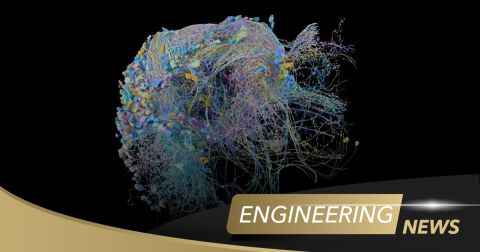PCBs vs. Multichip Modules, Chiplets, and Silicon Interconnect Fabric (2023 Update)

An article in the September 2019 issue of IEEE Spectrum claimed that silicon interconnect fabric, a method for connecting chiplets on a multichip module or advanced package, would eliminate PCBs and bulky SoCs for many applications, specifically motherboards.
It's now 2023, and no one seems to have ditched PCBs yet; the demand for PCBs remains as strong as ever and is still projected to grow at double-digit CAGR. This is despite the expected growth in advanced types of PCBs, specifically UHDI boards and substrate-like PCBs.
That 2019 article in IEEE Spectrum was at least the third time the "end of PCBs" claim has been made in as many decades. Multichip modules date back to IBM’s Bubble memory in the 1970s, and you can even design these using standard PCB design software, as long as you can build footprints for bonding bump-outs on semiconductor dies to your module. Once you cut through the buzzwords and analyze the challenges involved in bringing multichip modules into the mainstream, it’s easier to see what the future relationship between PCBs and integrated circuits looks like.
Advanced Packages, Chiplets, and Silicon Interconnect Fabric
Now that the electronics manufacturing conversation in the US and Europe has shifted to advanced packaging and local semiconductor production, more companies are bringing their chip design operations in-house. That means packaging will become the domain of these design teams, and PCB designers are the group with the skills to solve advanced packaging layouts involving heterogeneously integrated chips and modules.
Silicon interconnect fabric was intended as an interconnect platform supporting heterogeneous integration in advanced packages for ultra-large systems. In this packaging methodology, unpackaged dies are attached directly to a Si wafer with very fine vertical interconnect pitch (2 to 10 microns). Inter-die spacing is intended to be < 100 microns, giving very short interconnects between dies. The package is also intended to support 3D integration with vertical stacking of dies into a single module.

Structure of silicon interconnect fabric. [Source: UCLA CHIPS]
The fabric is intended to replace conventional interposers, packages, and PCBs. Call me biased, but I am skeptical such a packaging methodology would replace PCBs given the current structure of component manufacturing and distribution. To me, this looks like a structure that could be placed onto an interposer or package substrate, but would not be wholesale replacement for PCBs. I say this because this structure essentially enables 2.5D integration or 3D integration on a silicon wafer.
How far up the design hierarchy does packaging have to reach, and will these devices ever replace PCBs as the standard method of building electronics? The reality is that packaging methodologies used for interconnecting heterogeneous components are not intended to replace PCBs as the highest-level packaging solution. The modularity offered by off-the-shelf components in PCBs provides significant value and flexibility that engineers need. Until every off-the-shelf integrated circuit is also available as a chiplet, technologies like silicon interconnect fabric have no hope of outright replacing PCBs.
Despite my skepticism about replacing packages AND printed circuit boards with a totally new interconnect architecture, there has been additional research into silicon interconnect fabric-based systems. As a packaging technology, silicon interconnect fabric-based systems face some of the same challenges as conventional packaging and advanced PCBs, particularly in areas of power deliver, power stability, and inclusion of embedded capacitance in the fabric. Two recent papers on these topics are found below.
- Safari, Yousef, Anja Kroon, and Boris Vaisband. "Power Delivery for Ultra-Large-Scale Applications on Si-IF." In 2022 IEEE International Symposium on Circuits and Systems (ISCAS), pp. 1605-1609. IEEE, 2022.
- Kannan, K. T., and Subramanian S. Iyer. "Deep trench capacitors in silicon interconnect fabric." In 2020 IEEE 70th Electronic Components and Technology Conference (ECTC), pp. 2295-2301. IEEE, 2020.
The Verdict - PCBs Still Here to Stay
There are still many technical challenges involved in integrating chiplets with different functionalities and materials on a single substrate or multichip module, so for the moment, PCBs are here to stay. These types of packages and modules target more advanced applications than can be served with some off-the-shelf hardware, so PCBs will still be used in the majority of applications.
One of the biggest challenges in broadening the use of advanced packages to the point where they threaten PCB dominance has nothing to do with building advanced packages. Instead, it has everything to do with the chiplet ecosystem. Today, in 2023, you can't just go to a chiplet distributor, order a selection of semiconductor dies, and have them shipped to a packaging facility. The fabrication capacity exists in Asia, but such a chiplet marketplace is non-existent. Instead, the major processor vendors like Intel, NVIDIA, and AMD, as well as the major fabs like TSMC, are focused on this approach for the most advanced products.

Even if the chiplet ecosystem develops to the point that designers can grab chiplets off-the-shelf and use these to build custom heterogeneously integrated packages, this doesn’t mean we’ll have complete elimination of PCBs. It's simply not practical to integrate every sinlge possible feature or function into a single package. That's why we continue to need PCBs to connect off-the-shelf traditionally packaged components with more advanced packages and modules.
Until every function can be integrated into a single wafer, PCB designers will still have jobs designing advanced electronic systems. In this researcher’s opinion, we’ll see electronic-photonic integrated circuits (EPICs) become heavily commercialized before we see the heterogeneous integration envisioned in multichip modules. We may even see photonic chiplets integrated into multichip modules and connected with a photonic analogue of silicon interconnect fabric. The industry is holding conferences on developing standards and scaling strategies for commercializing silicon photonics components, as well as evaluation in other areas like adapting SPICE simulation techniques to photonic circuits.
As electronics continues to advance into areas like multichip modules and optical interconnects, look to companies like Altium and design platforms like Altium Designer® for tools to work with these new technologies in PCBs. The toolset in Altium Designer sits at the cutting edge of the EDA industry. You’ll be able to design compact boards for any application, manage your design data, and prepare new products for full-scale manufacturing.
Now you can download a free trial of Altium Designer and learn more about the industry’s best layout, simulation, and production planning tools. Talk to an Altium expert today to learn more.











